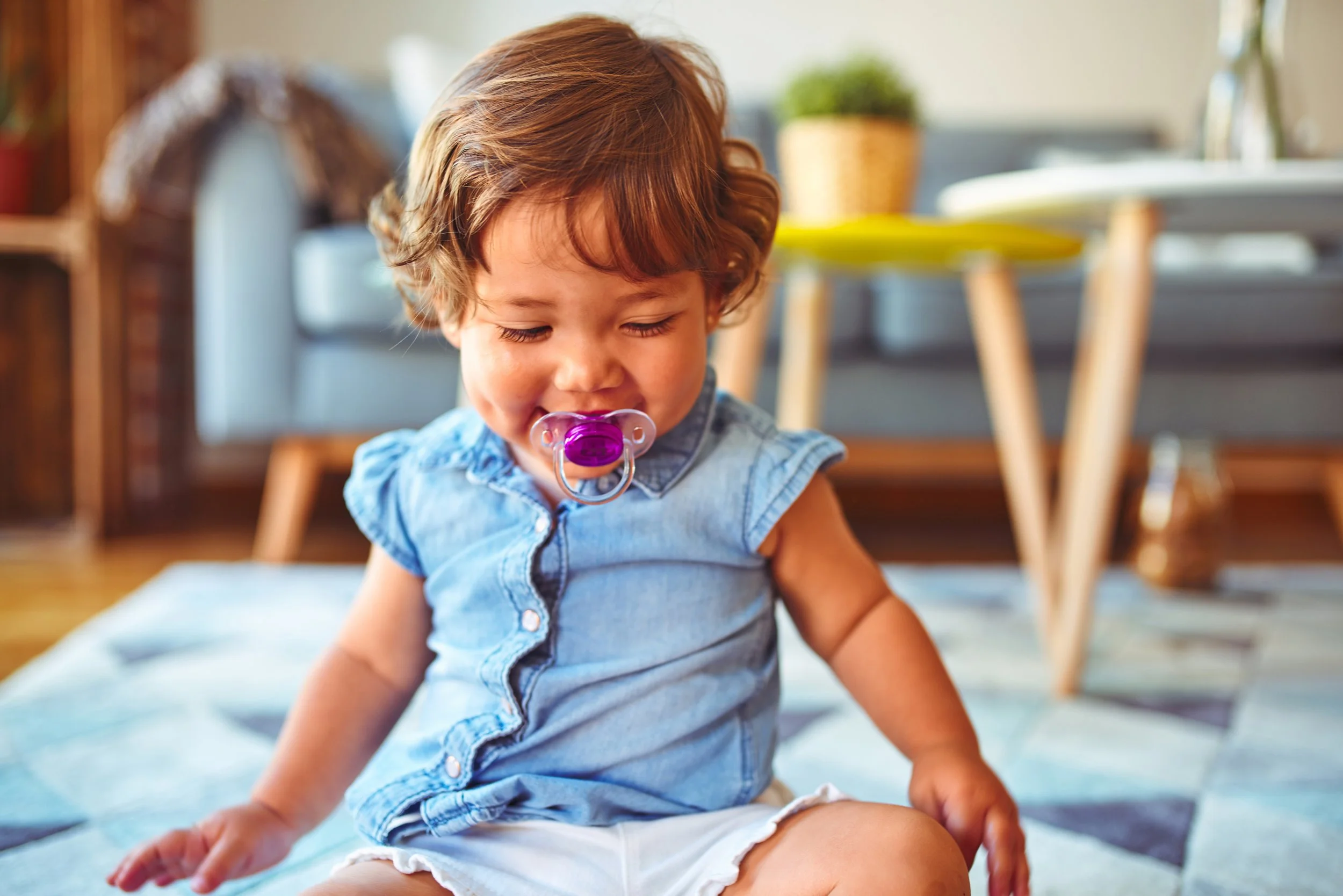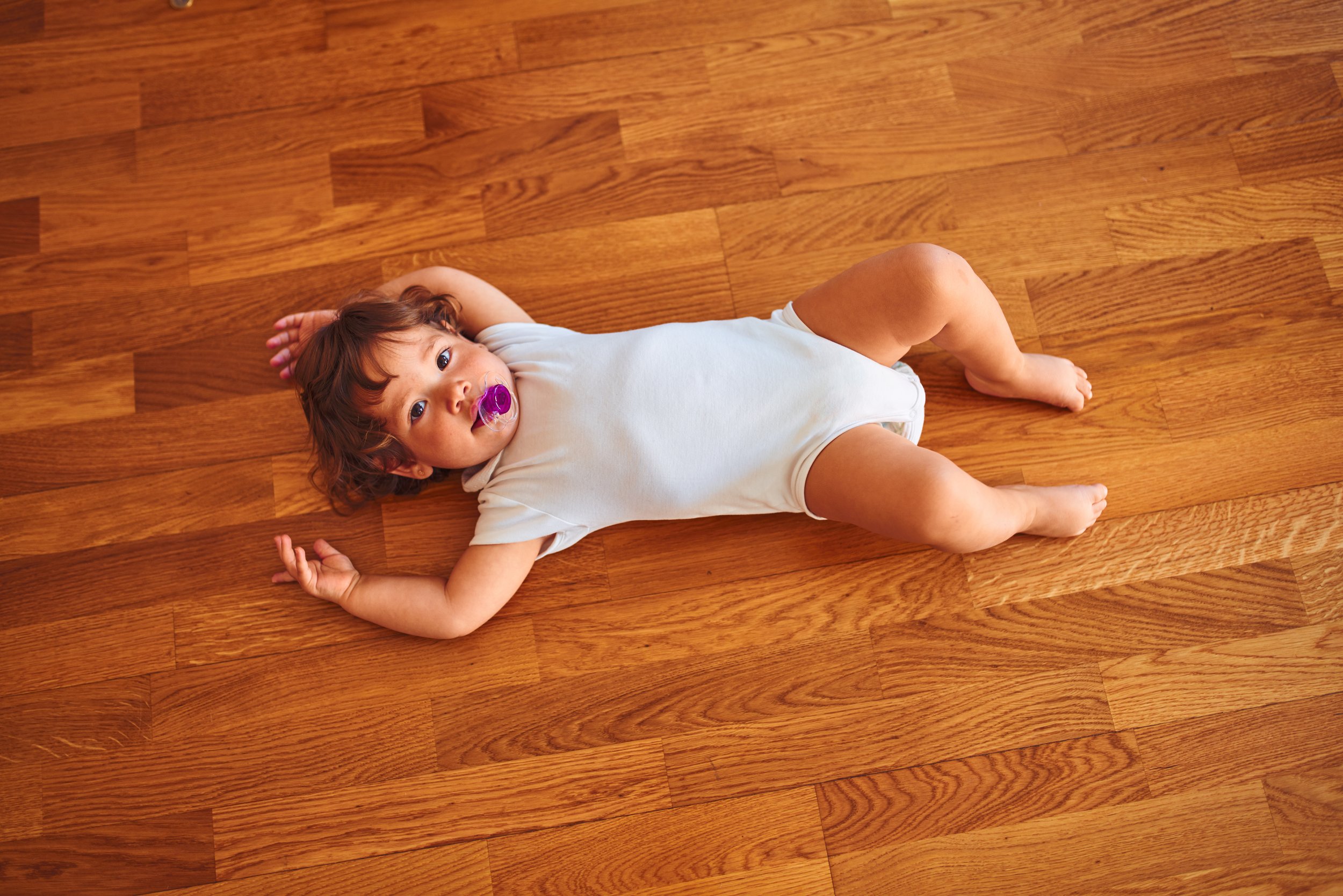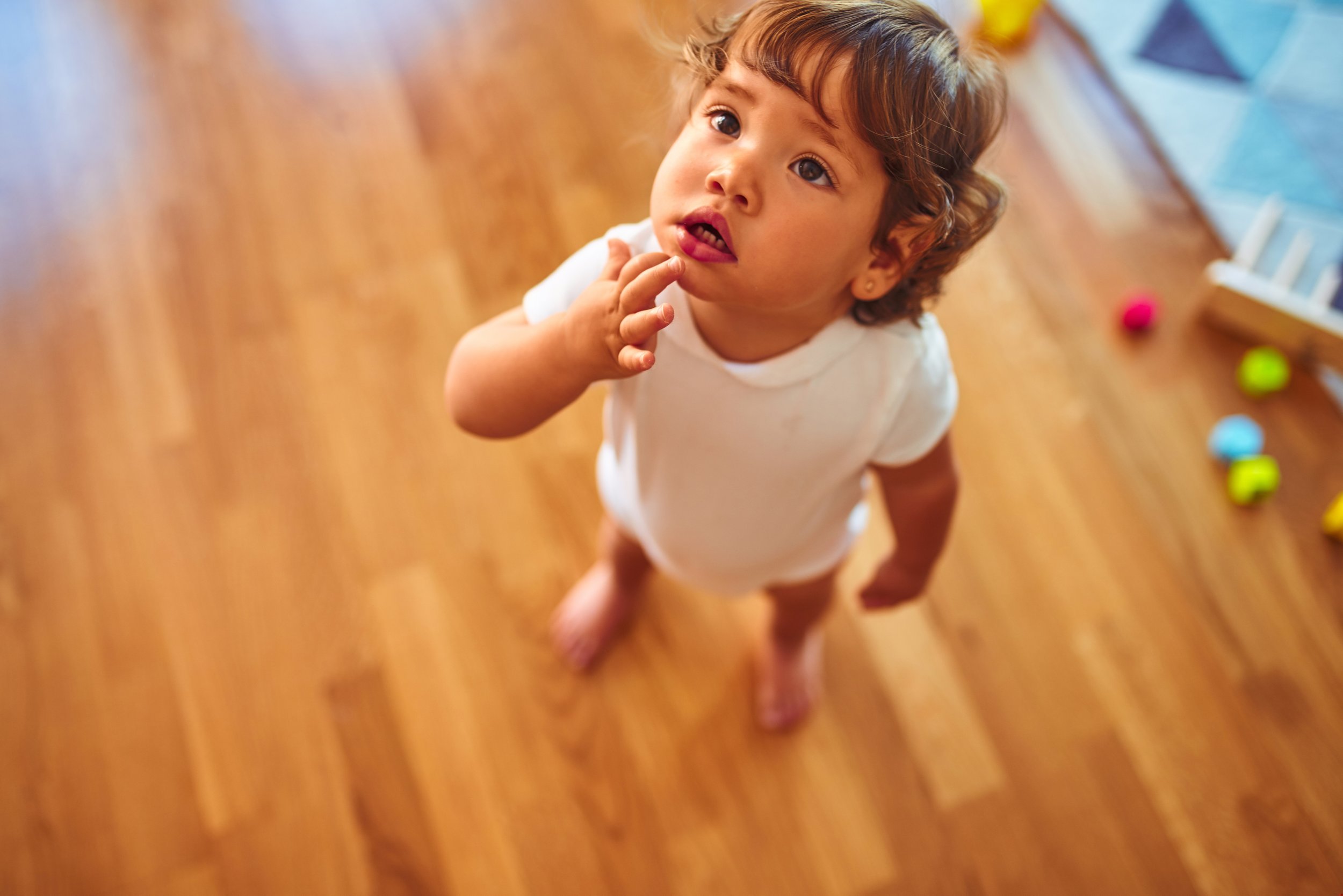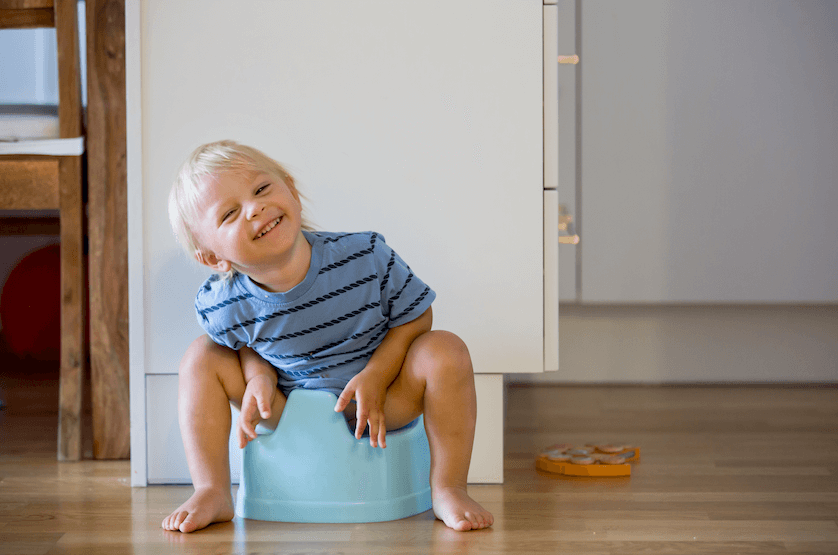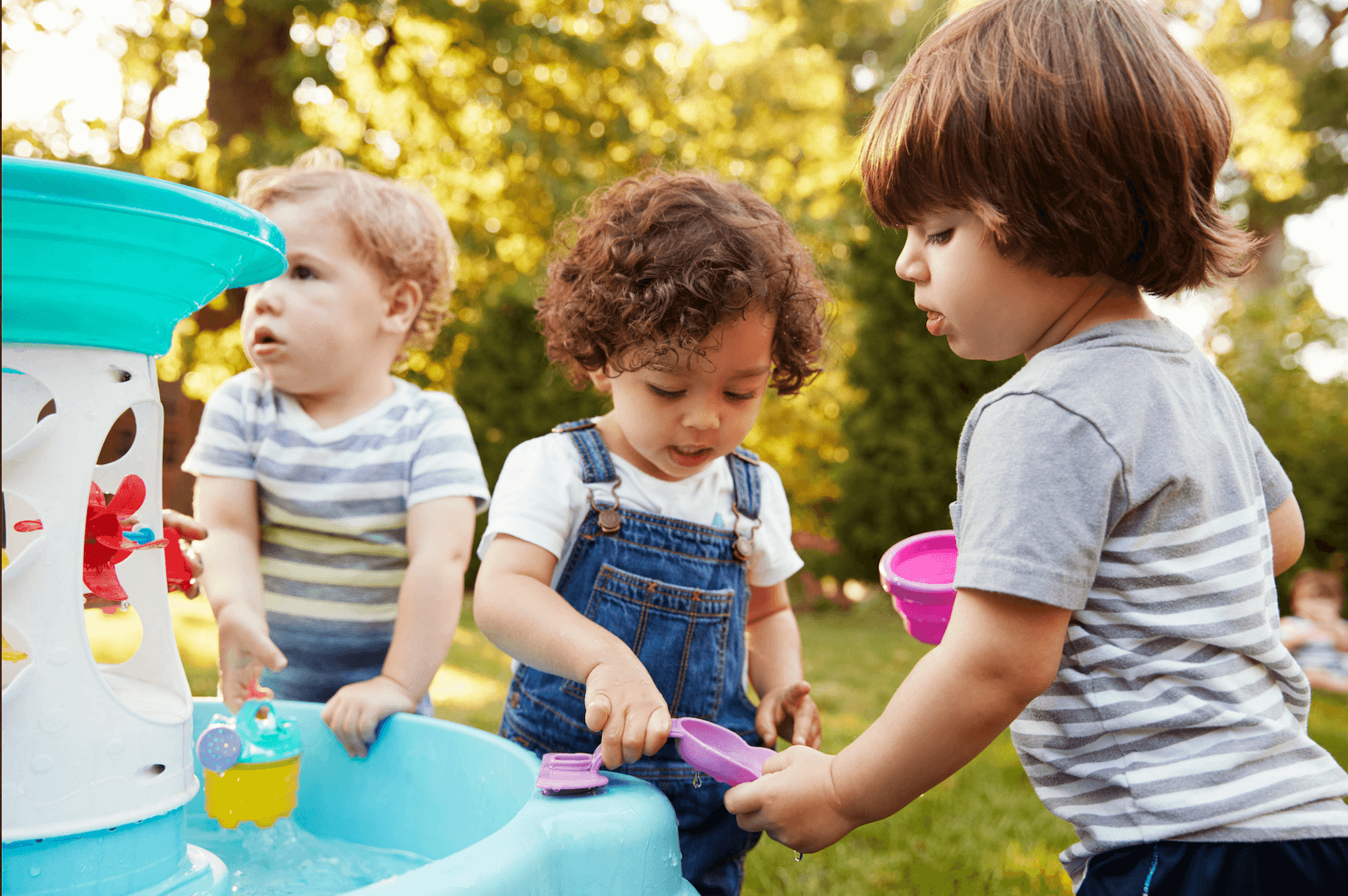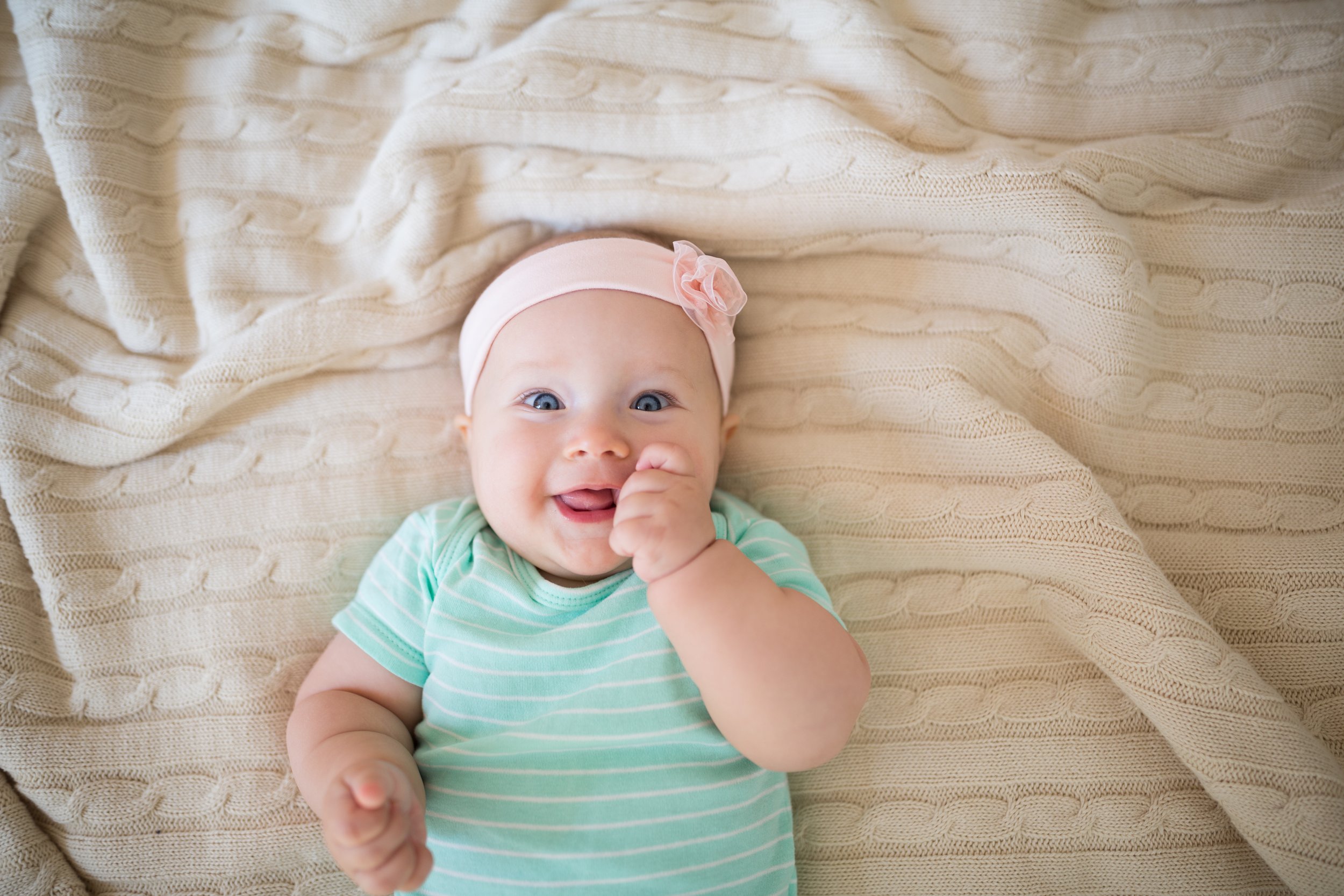Do pacifiers cause speech delay?
You may have a toddler who is currently using a pacifier during the day and are wondering if there is a correlation between pacifier use and speech delay.
Or perhaps they only use it at night, but you’ve heard that pacifiers can keep kids from talking regardless of when they are used. Or someone in your life has asked when you plan to wean your child from their pacifier and you have no idea when that right time is.
This leads me to one of the most common questions speech therapists get:
Can a pacifier delay speech?
I’m going to be completely honest here: yes. Pacifier use can keep kids from talking. Let me explain.
I’ll talk about my experience working with toddlers who are pacifier fanatics, and
I have been seeing toddlers for over a decade and at this point, I can definitely say that prolonged, habitual pacifier use can keep children from learning sounds correctly, keep them from talking as much as they should, even negatively change the way that they swallow.
In many cases, I can tell that a toddler uses a pacifier too much just by looking at the way that their teeth look and the way that they hold their lips and tongue. Not every child is ill-affected by the pacifier, but it is certainly a common variable for late-talking toddlers.
When should I stop the pacifier?
My official recommendation is no artificial nipples after 12 months, but I give parents an extra 6 months after that for weaning. By 18 months I suggest no pacifiers, no bottles, and no hard spouted sippy cups.
This timeline is based on two important factors:
12 months is right around the time that a baby will start saying a first word. So developmentally, I want to give that baby the best chance possible to develop their talking.
Also, by 12 months there are definitely some little teeth in that mouth. I want them to grow normally and not get pushed forward and up. Those little teeth can also bite the end off a pacifier, which is dangerous.
What is the pacifier doing to my child’s mouth?
Let’s get technical for a second.
There are four parts of the mouth that get touched when a pacifier is in the mouth: the front of the tongue, the front top teeth, the lips, and the hard front part of the roof of the mouth (the palate.) To accommodate a pacifier, the lips have to remain always open, the front of the tongue is always busy, and there is constant pushing on the teeth and palate.
Now consider that in a small child, these structures are soft and are trying to grow. If there is constantly a foreign object there, the teeth and palate are going to get pushed and grow around the obstruction. The front of the tongue gets used to only touching a pacifier (and not the roof of the mouth) and the lips don’t close together. The more time the pacifier is in the mouth, the less time these structures have to develop normally.
This is why a child who has habitually used a pacifier day and night for several years will keep their mouth open at rest, have teeth that have grown pushed up slightly, the front of the tongue will be hanging loosely in the center of the mouth, and the palate may be higher than normal.
How do pacifiers cause speech delay?
If a child is actively using a pacifier, it is simply harder for them to talk because there is something in their mouth. Even if a child does try to talk with a pacifier in place, it is likely that they will say less than they would if it wasn’t there. They may only try to say one word, or make a sound and point, when otherwise they may have actually tried to say a word combination.
Has your dentist ever tried to engage you in conversation during a cleaning? They ask, how was your weekend? Normally, you might say a few sentences. But because there is a bunch of dentist stuff in your mouth, you simply say, “Good” and leave it at that. Pacifiers work the same way. Now add in the variable that the child is still learning to talk.
Having a pacifier in the mouth might actually keep them from practicing talking; pacifiers can cause speech delay.
In addition to impacting language, pacifiers can have a (sometimes long-lasting) impact on speech. There are a group of sounds that are made when the front of the tongue touches the roof of the mouth (t, d, s, z, n.) If there is a physical obstruction in the way, a child will make these sounds wrong and sometimes even use a sound made by the back of the tongue as a substitute (“Gaggy” for Daddy.) Because the lips are open, sounds that use the lips (p, b, m) may be weak or sound funny. In order to keep the pacifier in the mouth, the teeth generally have to be kept close together. That means that words where you have to open your jaw a little wide (cat, bag) will sound off because the jaw remains shut (“ket”, “beg”.)
These unusual speech patterns might only take place when the pacifier is in the mouth, but in many cases even when it is out of the mouth, the habit lives on and the speech will sound wrong.
How does a pacifier impact a child’s swallow?
Have you ever seen a baby eat? They do a cute thing where they push their tongue forward and sometimes out of their mouth when they swallow. That’s a normal way for a baby to swallow because they develop a swallow when they are nursing or drinking out of a bottle. But as they get older, they stop using this baby swallow and learn a mature swallow where they actually pull the tongue back instead of pushing it forward (Go ahead, try it, and notice what your tongue does.)
But when children have something constantly activating the front of their tongue (like a bottle, pacifier, hard-spouted cup, or thumb sucking), it can keep them using this baby swallow longer. This is an entire tongue movement pattern called a tongue thrust, and is considered an immature swallow pattern beyond one year of age. Kids (and adults) with a tongue thrust swallow may have front teeth that are pushed forward and speak with a lisp. Braces can pull the teeth back, but unless a therapist helps the person correct their swallow pattern the teeth will get pushed forward again.
Long term effects of a tongue thrust swallowing pattern can also cause feeding (chewing) difficulties in childhood and beyond.
What do I do if my child’s speech has been affected by a pacifier?
The first thing to do is to decrease and then eliminate using a pacifier. I KNOW that this is easier said than done, but you can do it! Here’s a list of some of the most common strategies for getting rid of the pacifier:
Cold turkey - I’ve worked with many families who bid farewell to the pacifier cold turkey; and after the initial days most parents say it wasn’t as bad as they thought. A word of advice if you’re going cold turkey: be sure to plan your pacifier farewell for a week when you don’t have a ton of other stuff going on; it will likely take some extra time and patience on your part to help your child get used to life without the pacifier (investing time now for a pacifier free future!).
Slow wean - The slow wean is a favorite approach of many parents. Think of all the times during the day when your child uses a pacifier and slowly begin to reduce the amount of time they are using it, keeping pacifier use at a minimum.
Lovey - Helping your little one learn to soothe themselves with a favorite lovey is a great alternative for pacifier use.
If atypical speech patterns continue even after the pacifier has been gone a few months, an experienced speech-language pathologist can give you and your child help to correct those patterns.
If your child continues to have a tongue thrust swallow and speech pattern that persists after toddlerhood, they may benefit from tongue thrust therapy (done by an SLP who specializes in tongue thrust.) This usually takes place in mid-elementary school as a child has to be old enough to understand and implement the program.
As with most things related to health (in children and adults), prevention is easier than treatment. So if you are considering weaning your child from their pacifier, the sooner the better. You’ve got this!
Here are some other questions parents commonly ask about speech development and pacifiers
-
It’s possible that pacifier use in toddlers can inhibit speech development because sucking on a pacifier habitually can impact the development of the muscles of the mouth.
Also, children are less likely to talk if the pacifier is in their mouth. With less practice they may fall behind in their milestones.
-
Habitual use of pacifiers and bottles in toddlerhood can delay speech development.
-
As speech therapists, we recommend taking the binky or pacifier away at 12 months. But we give a 6 month grace period (18 months) for weaning.
-
Habitual use of a pacifier can delay a child’s speech development, affect their incoming teeth, and cause difficulties with swallowing.
Written By: Stephanie Burgener-Vader, MA, CCC-SLP and Stephanie Keffer, MS, CCC-SLP
More From The Blog:
© 2020-2025. Stephanie Keffer Hatleli, MS CCC-SLP. All Rights Reserved.The content offered on ToddlerTalk.com is for informational purposes only. Toddler Talk is not engaged in rendering professional advice, whether medical or otherwise, to individual users or their children or families. No content on this site, regardless of date, should ever be used as a substitute for direct medical advice from your doctor, speech language pathologist, or other health professional. By accessing the content on ToddlerTalk.com, you acknowledge and agree that you are accepting the responsibility for your child’s health and well-being. In return for providing you with information related to home speech and language practice, you waive any claims that you or your child may have as a result of utilizing the content on ToddlerTalk.com.


